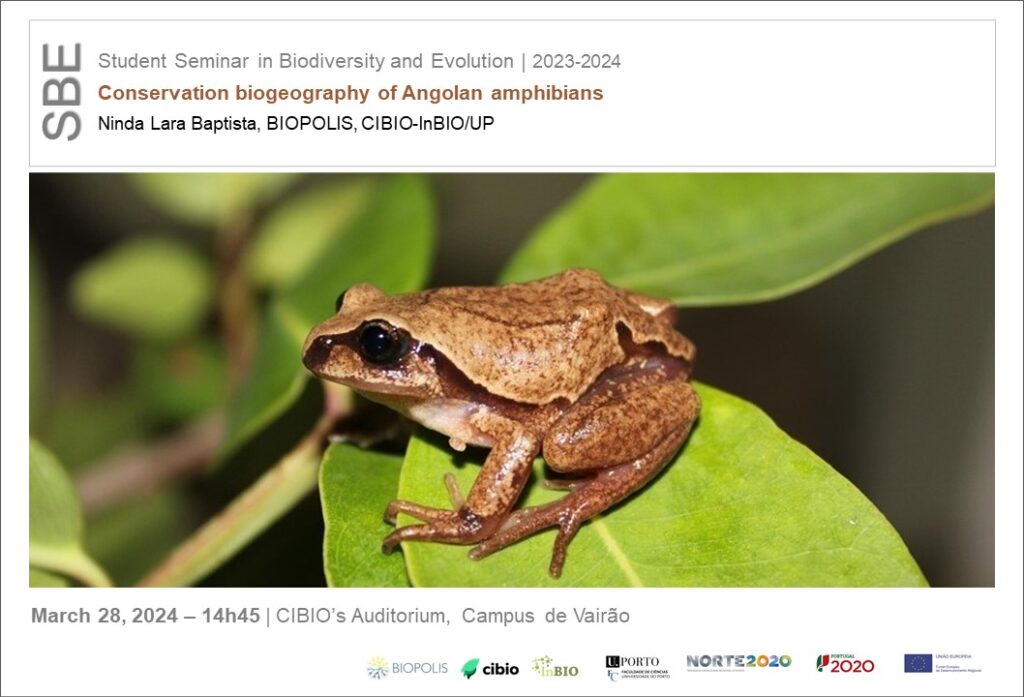
Conservation biogeography of Angolan amphibians
Ninda Lara Baptista, BIOPOLIS, CIBIO-InBIO/UP
March 28, 2024 | 14h45 | CIBIO, Campus de Vairão
Africa hosts the largest terrestrial tropical area among all continents, but it is the most poorly surveyed. Its huge area, history of political instability, intense natural resources exploitation, and little research in many countries, pose challenges to understanding its diversity. Angola is a perfect representative of tropical Africa, being wide and diverse, in a transition between the central moist forests and the southern deserts. Many studies addressing ecological hypotheses in Africa lack data from this crucial region, thus filling these gaps is valuable. Angolan biodiversity is poorly studied and amphibians are the least known tetrapod class therein. We used Angolan amphibians as proxys for afrotropical biodiversity to create a genetic reference database, identify cryptic diversity, and map the distribution of species richness. Amphibian samples were collected across all provinces during 14 years (2009–2023). Mitochondrial lineages were delimited based on the 16S rRNA gene. Their distribution was mapped to identify richness and endemism patterns per 1-degree grid cells, biomes and ecoregions. The first comprehensive genetic reference database of Angolan amphibians was produced, with over 1600 sequences, including 133 anuran taxa from 28 genera and 13 families, and 47 endemic and 47 candidate species. Patterns of richness distribution follow a north-south latitudinal gradient decrease, reflecting rainfall and temperature regimes. Northern ecoregions displayed the highest richness. These results greatly increase the previously reported amphibian richness in Angola. New taxa will likely continue to be found as field surveys progress, especially in northern areas. This dataset improves considerably the knowledge about the Angolan transition zone and now enables ecological studies at a continental scale.
More information here